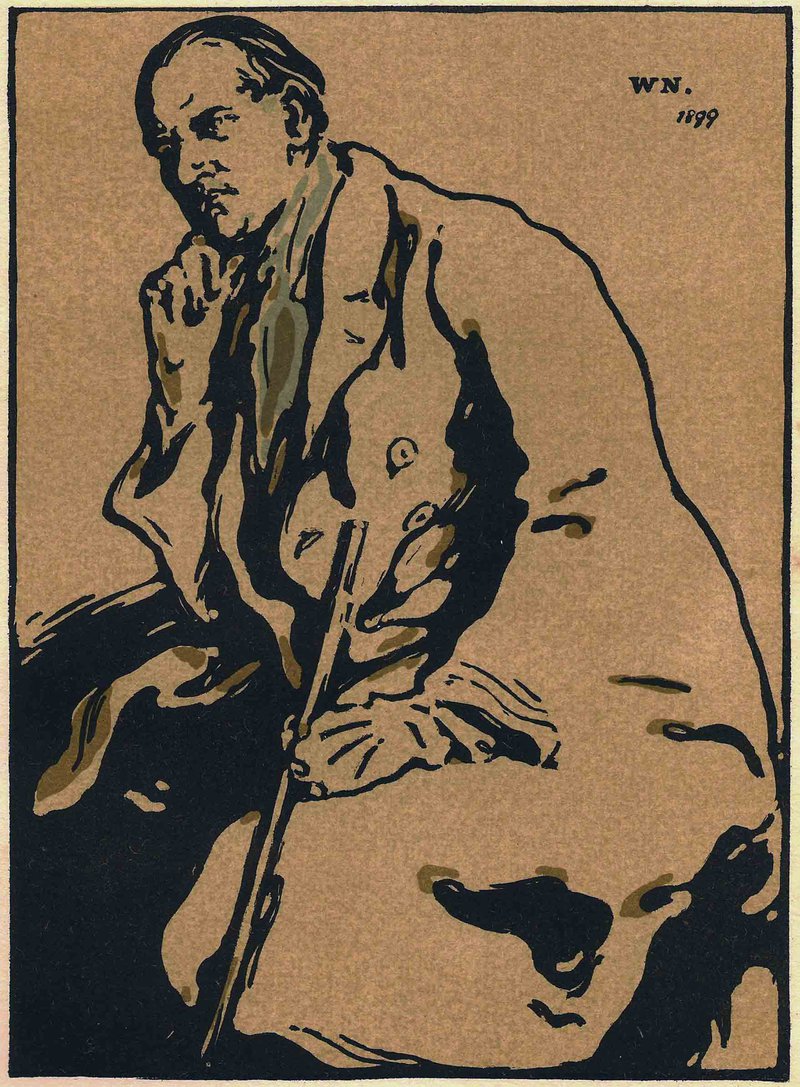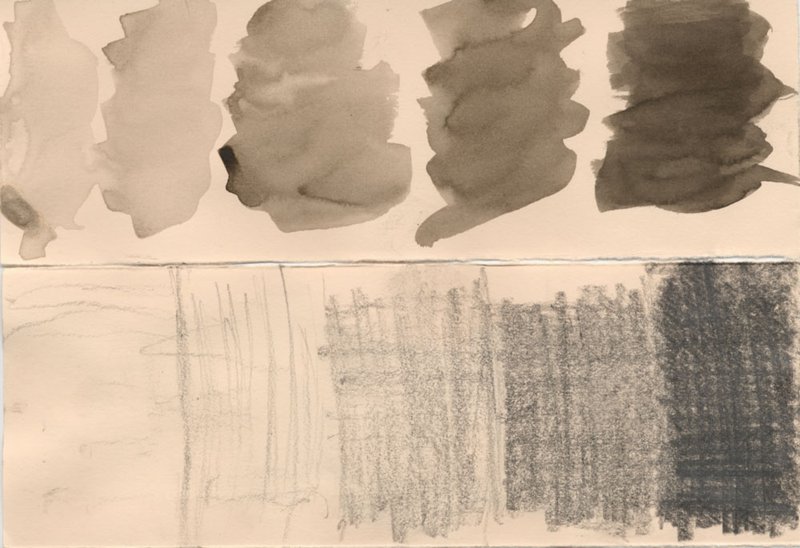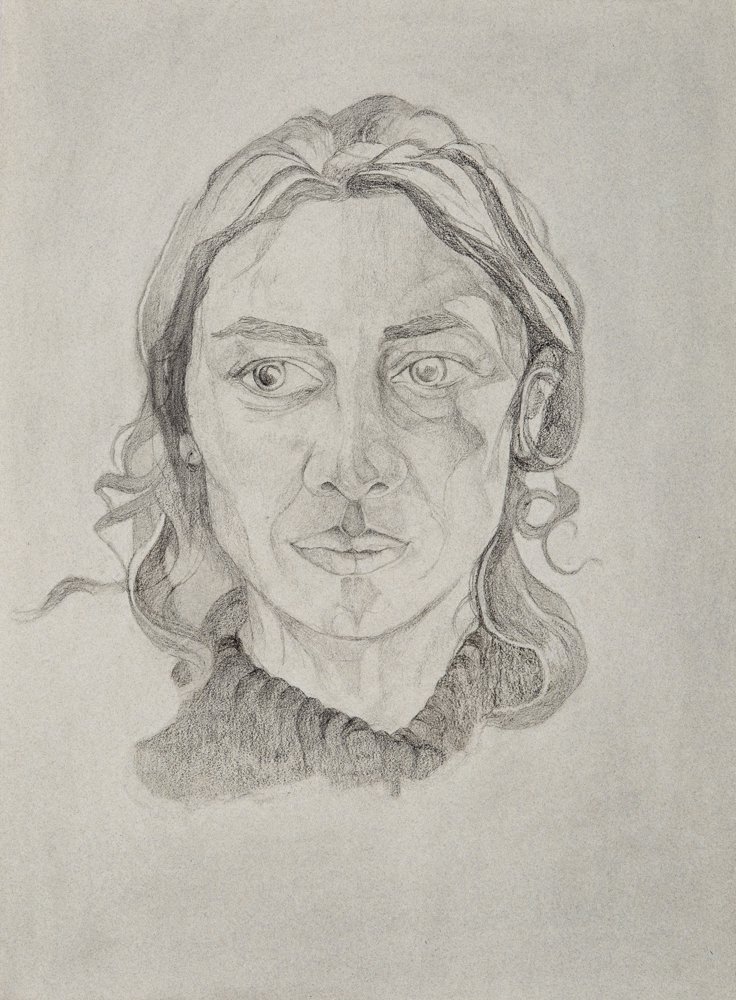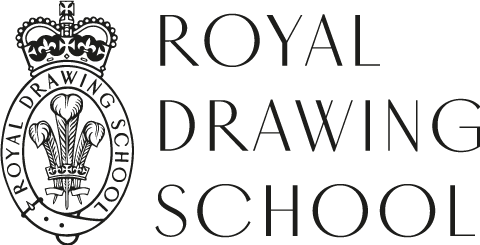Drawing Exercise: The Claude glass
Drawing: Composition and Colour tutor, Will Topley introduces us to the Claude Glass and explains how it simplifies the tonal range and break downs an observable scene into manageable shapes. Here he employs the Claude glass as an aide to self-portrait drawing.
The Claude glass is named after the French 17th century landscape painter Claude Lorraine. It is not known for sure that he used one, but none-the-less it played its part in the Picturesque movement, one that sought an idealised beauty in nature that it also found in Claude Lorrain.

Claude glasses were widely used by tourists and amateur artists and thus went from being fashionable to somewhat infra dig (beneath one's dignity). Anything that appears to fix all difficulties in art is usually a sure-fire recipe for disaster, so perhaps its demise was a good thing. However, the Claude glass can illustrate a useful principle in drawing and painting and that is the grading of tones.
It helps to make an image readable if you can group your tones together to form strong shapes in your composition. The tone refers to how light or dark something is and is an aspect of colour independent of hue and chroma.

So, let us make a Claude Glass and do a picture based on degrees of tone.
A genuine antique glass is hard to come by. They are made up of a dark toned convex glass (shaped much like a watch glass) with silver mirror backing. The convex aspect shrinks the view and makes it easier to appreciate how the independent elements in your view hold together. It’s a bit like taking a few steps back from your picture when you are working. Suddenly you see glaring errors that you missed when they had been right in front of your nose. The darkness is where the magic takes place. When you look into it you will see that shapes and tones reflected in dark glass have become simplified, while still maintaining their hierarchy.

An acceptable glass can be found simply by looking into an iPad or tablet with the screen turned off. A sheet of black paper put in behind the glass of a photo frame is a passable alternative. If you don’t have any of those available, try painting a sheet of card black and sticking it to the outside of one of your windowpanes (please be careful). I took a watch glass from an old broken clock and sprayed the inside with black paint. It gave a wonderful result as did spraying the inside of a picture frame glass. I would say these are luxury DIY versions, but any of the above will do.

Some people have likened the Claude glass to an Instagram filter so it seems only natural that we should do a selfie. For those nervous about doing a self-portrait (and who isn’t) I think this may be a good place to start as the glass makes for a simplified abstract quality that breaks the face down into manageable shapes.
The tonal range in a “normal” view ranges from nearly black to white - or even brighter if you can see a lamp or light source from where you are. In a drawing we only have tones from our darkest pencil to the white of the paper so they need to be bunched together a bit so we can give an account of the full range.
The same happens in our Claude glass, but more so. The tones go from near black to some sort of grey. But it also seems that the range of tone becomes simplified so that it appears to group into a limited number of similar values.
Many Artists seem to work within a simplified tonal range and this helps to give clarity to the image.

I suggest you make a grey scale on a strip of paper or at the edge of your picture something like this.

You can then hold the strip up in front of you to compare the values. It may take a couple of goes to hit on the right scale. You may however choose not to match the tones faithfully - that’s fine. Just try to keep them in the right order much as you would sort your cards into numerical order when playing Poker, Bridge or Snap. Not all the tones will necessarily be needed
This picture could be approached in any media. A drawing in pencil can be a good way to reacquaint yourself with your face.

You could then mix up 5, little pots or wells of ink in varying degrees of tone and try to find the larger tonal areas.

Spaces are still available on this course. For more information and to book click here or contact the office at admin@royaldrawingschool.org
Artworks From Top:
Thomas Gainsborough, Man Holding A Claude glass, graphite on medium, slightly textured, cream wove paper, 24cm x 17cm, 1727–1788
Claude Lorrain, View of the Campagna, wash drawing, 1640-1660 circa
William Nicholson, Portrait of James Pryde, woodcut, 1899; published in The Studio in July 1901
Honoré Daumier, Two Drinkers, pen and ink with wash over charcoal on paper, 32 x 24.5 cm, 1860-69
Selfie photo, artists own
Esmee Hodsoll, Drawing Year alumna, Portrait of a Girl (at Night), pencil on paper, 51 x 38cm, 2015



